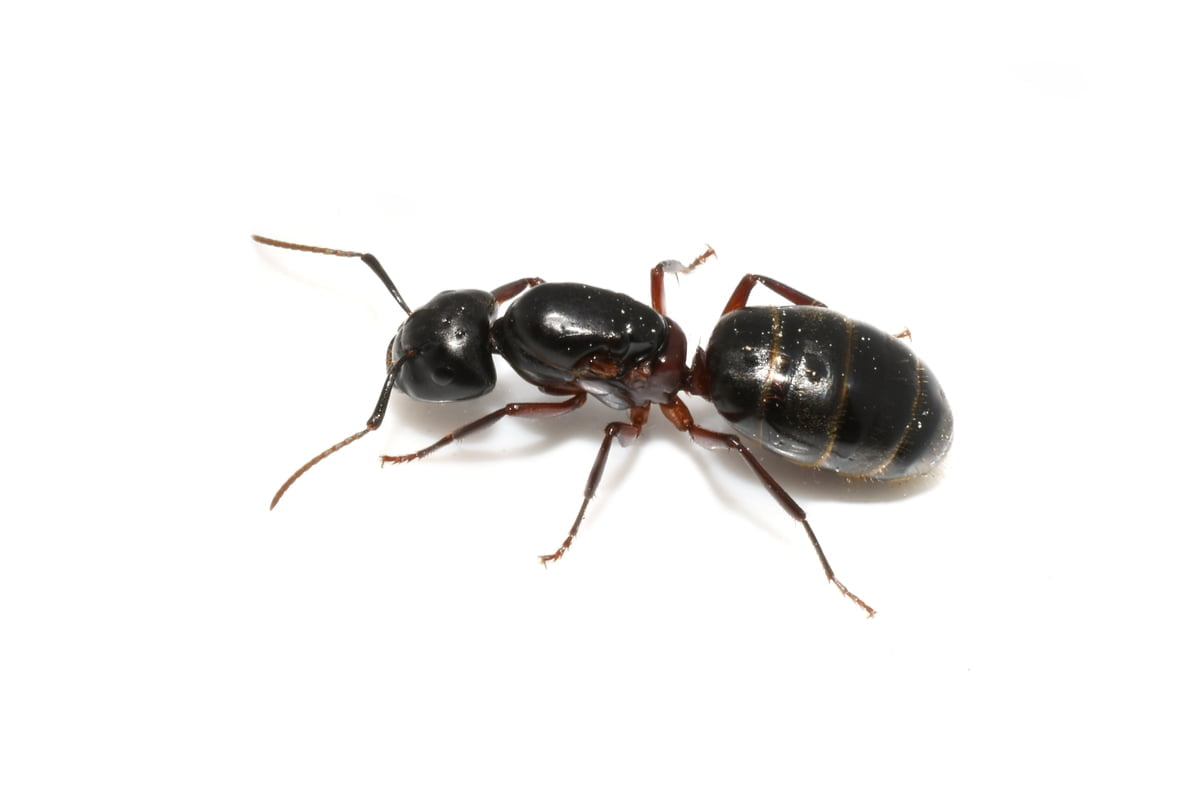Carpenter Ant
Appearance
In general, carpenter ants are black in color, with shades of red or brown depending on the species. The females are between 3 to 13 mm (1/8 inch to 1/2 inches) in length, while queens can grow to over 25 mm (1 inch) and are the only females with wings. The head of the carpenter ants are large, their antennas are bent and they have powerful mandibles (jaws).
Think you might have found this insect in your home?
Talk with an Expert
Life Cycle
Ants are social insects that typically establish colonies during a period of two or three years. When a colony contains between 2,000 and 3,000 ants, the colony is then established and the queen leaves to start a new one. Worker ants live around 7 years and the queen up to 17 years!
Habitat and Food
Indoors, the carpenter ant usually makes its nest in places where wood is wet, in hollow doors, wood cabinets near the dishwasher, behind baseboards, fireplaces and window frames, as well as basements and attics. They are typically nocturnal and attracted to foods such as honey, jam, fruit and meat.

Undesirable Effects
Although carpenter ants do not sting, they can bite. Once inside the house, they feed on almost anything that humans consume. Carpenter ants damage wood structures when they install their colony. As in the case of any parasite, the infestation of the carpenter ant is unpleasant for the occupants.

Signs of Infestation
Small piles of sawdust from wooden frames can be an indication of the presence of carpenter ants. If, in spring, a swarm of winged ants form on the windows, it is a sign that there has been an infestation for a long time.
Preparation Steps for a Treatment
- Do not use insecticide sprays in areas affected by ants before or after treatment. Also, do not clean with chemicals. These products can make the bait less effective.
- Empty all kitchen cabinets and drawers, including crockery and food. Place food in the refrigerator and the rest on a table. Make sure you take everything off of the kitchen counter.
- If carpenter ants have been spotted in the bathroom, clean the vanity.
- Because a general treatment of your home is a possibility, clean the home thoroughly, including inside cabinets and drawers.
- Plan that the AJS specialist may place bait stations in the home. The bait stations should not be moved.
- Plan to leave your home for the duration of the treatment and return only after 4 hours. Wherever possible, open windows for 20 minutes upon your return. It is also important to not walk barefoot on treated areas for 48 hours after treatment.